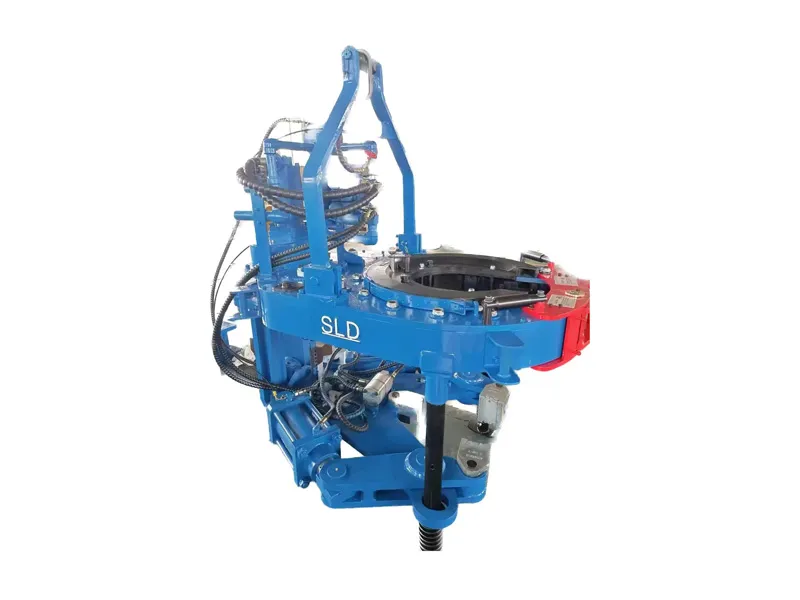How often does the Bucking Unit need maintenance?
Browse services
- Petroleum and Gas
- What are the advantages of using a Bucking Unit?
- Common Bucking Unit Operation Errors and How to Avoid Them?
- What are the safety checks before operating a Bucking Unit?
- Bucking Unit Safety Operating Procedures
- How to Use the Operator Panel to Control a Bucking Unit
- How to Calibrate a Bucking Unit?
- What preparations are needed before using the Bucking Unit?
- What is the operating procedure of the Bucking Unit?
- Common faults and troubleshooting methods during the use of Bucking Unit
- How should I replace worn parts of the Bucking Unit?
- How to maintain the electronic control system of the Bucking Unit?
- How does Bucking Unit handle oil leaks?
06 Aug
Bucking units are essential equipment used in the oil and gas industry to connect and disconnect downhole tools such as drill bits, tubing, and casing. Their operational reliability and precision are directly linked to connection quality and operational safety. Therefore, regular, scientific, and effective maintenance is crucial to ensuring their long-term, efficient, and safe operation. Bucking unit maintenance cycles and details vary widely and require comprehensive consideration based on multiple factors, including usage intensity, operating environment, equipment configuration, and manufacturer recommendations. However, a three-tiered approach is generally recommended: daily maintenance, scheduled maintenance, and annual overhaul.
1. Daily Maintenance (Daily or Before and After Each Operation)
Daily maintenance is the first line of defense to ensure equipment is in good working order. Operators should routinely inspect and clean key areas before and after each operation to avoid malfunctions caused by neglected details.
Specific procedures include:
Cleaning the equipment surface and clamping jaws: Promptly remove oil stains, metal debris, and dust to prevent impurities from affecting clamping accuracy and connection torque.
Checking the hydraulic system for leaks: Inspect the tubing, joints, and pump station for leaks to ensure stable pressure. Observe the operating status of the control system: Power on and check button response, signal indicators, and touchscreen sensitivity.
Lubricate moving parts, such as guide rails, slides, and rotary joints, to ensure they are well lubricated and prevent dry friction.
Check bolt fastenings: Check all connecting bolts and jaw fasteners for looseness and address them promptly to prevent them from coming loose.
Daily maintenance focuses on "quick inspection and quick repair" and is generally completed within ten minutes. This requires operators to be familiar with the equipment structure and possess basic judgment skills.
2. Regular Maintenance (Weekly or Monthly)
For frequently used Bucking Units, a more in-depth inspection and maintenance is recommended weekly or monthly. This maintenance phase focuses on preventive inspection and maintenance of key functional systems to prevent potential faults from escalating.
Maintenance points include:
Check hydraulic oil quality and level: If the hydraulic oil shows signs of discoloration, emulsification, or impurity deposits, it should be replaced promptly. If the oil level is low, replenish with the same type of oil.
Replace or clean the hydraulic filter: Ensure that no fine particles enter the hydraulic circuit, preventing damage to the valve block and cylinder. Inspect the main drive system's transmission components for wear: Check the motor, reducer, and coupling for smooth operation and abnormal noise or temperature rise.
Inspect the jaw gasket for wear: Excessive wear will reduce gripping capacity and should be replaced promptly.
Verify the accuracy of the torque sensor and angle encoder: Perform calibration tests to ensure accurate data collection in the control system.
Test safety devices, such as emergency stop switches, limit switches, and torque overload protection, to confirm their effectiveness.
Regular maintenance is typically performed by experienced technicians, and the equipment manufacturer may provide technical support if necessary.
3. Annual Inspection (Annually or after a specified number of operating hours)
The annual inspection is a deep maintenance phase for the Bucking Unit. Its purpose is to comprehensively assess the equipment's current operating status, identify underlying potential hazards, and replace or repair worn and deteriorated components to ensure stable and reliable operation for the next cycle.
The annual inspection typically includes:
Comprehensive inspection and oil replacement of the hydraulic system: This includes testing the leak tightness and response speed of the pump, cylinder, and valve block. Electronic control system calibration and system upgrade: Perform a comprehensive inspection of the PLC, control panel, sensor circuits, and other components, upgrading programs or replacing aging cables as necessary.
Structural component non-destructive testing: Perform magnetic particle or ultrasonic testing on the main structure and key welds to prevent fatigue crack development.
Replace critical wear parts such as high-pressure seals, slewing bearings, and jaw inserts.
Precisely calibrate the torque control system to ensure consistency between torque output and system display, preventing misjudgment of connection quality.
Fully test and adjust all safety systems to restore the equipment to its initial design state to ensure human and machine safety during future operations.
Annual maintenance is recommended to be conducted by a professional technical team, with written records maintained and included in the equipment lifecycle management file for future reference.
4. Enhanced Maintenance in Special Environments
If the Bucking Unit is used in special environments such as high temperature, high humidity, high dust, or offshore, maintenance frequency should be increased appropriately. For example, when operating on offshore platforms, the equipment is more susceptible to salt spray corrosion, so it is recommended to increase the frequency of rust prevention treatment and use specialized lubricants. At the same time, during periods of high-intensity, continuous operation, such as peak oilfield development phases or large-scale projects, equipment loads increase significantly, and maintenance cycles should be shortened to avoid unexpected failures that interrupt operations.
5. Establishing Maintenance Records and Personnel Training
Developing a scientific maintenance plan and strictly enforcing it are crucial to extending equipment life. Companies should establish equipment operation and maintenance records, documenting every maintenance, inspection, fault, and response, to facilitate tracking and improvement.
Furthermore, training operators and maintenance personnel in equipment awareness is essential for achieving standardized maintenance. Good maintenance relies not only on institutional arrangements but also on improving personnel quality and strengthening their sense of responsibility.
Conclusion
Bucking unit maintenance is not a temporary response; it is a systematic, preventative, and daily practice. A reasonable maintenance frequency schedule should be flexibly adjusted based on frequency of use, operational intensity, environmental conditions, and equipment status. In practice, a "daily inspection, monthly maintenance, and annual repair" framework is recommended, supplemented by dynamic adjustments and technical support. Through continuous and standardized maintenance management, unplanned downtime and safety incidents can be effectively avoided. It can also improve connection quality, reduce operating costs, and extend the economic value of equipment throughout its lifecycle.

 Português
Português






